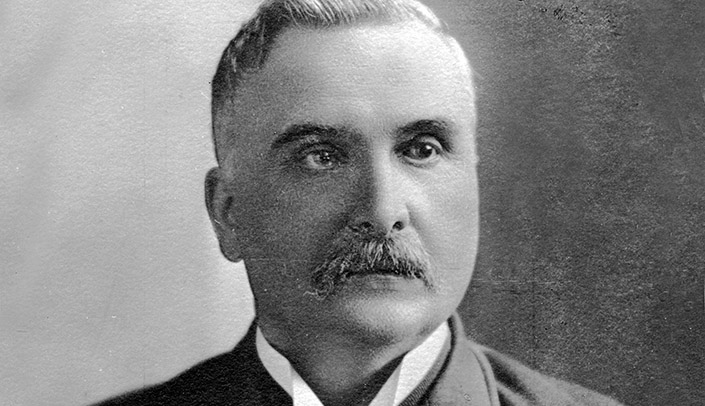The railroad holds an essential place in the history of Omaha. The Omaha Medical College (OMC) course catalogs in the 1890s reported that 14 railroads were centered in Omaha, while three established their headquarters here.
Railroad work was difficult and dangerous, injuring a high percentage of workers. The injuries suffered by employees were traumatic, and regular physicians had little experience with that type of treatment. Companies recognized that it made practical sense to hire their own physicians rather than to contract with private doctors. Medical schools began to offer courses on railroad surgery to prepare physicians for the unique demands of railway medicine.
In 1888, OMC, the precursor of the University of Nebraska College of Medicine, first offered the course “Railroad and Clinical Surgery.” William Galbraith, MD, the Union Pacific (UP) Railroad chief surgeon, taught the class from 1888-1893. Twice a week, he held a clinic at St. Joseph Hospital, where UP sent its injured. The OMC course catalog for 1890 describes the clinic:
“From the large amount of material furnished him as division surgeon of the Union Pacific railway, he is enabled to perform many capital operations and to treat all kinds of railway injury before the class.”
After Dr. Galbraith departed OMC, Donald Macrae, Sr., MD, taught the course from 1895-1908. He was the surgeon to the Chicago, Rock Island, and Pacific Railroad; the Chicago, Milwaukee, St. Paul and Pacific Railroad; and the Chicago, Burlington & Quincy Railroad. In 1898, another professor at OMC, August Jonas, MD, became the chief surgeon for UP, a position he held for 27 years.
There was no certification board for railroad surgery. However, in 1887, surgeons formed the National Association of Railway Surgeons (NARS). NARS held its convention in Omaha in 1893. UP entertained the visiting physicians with a free Pullman Car excursion to Denver and Hot Springs, South Dakota.
Railroad medicine was an unglamorous job. Surgeons were often called to treat the injured in bad weather, darkness or far from proper hospitals. They created first aid kits of sterile supplies to transport to the site of the injuries and trained railroad employees in first aid techniques.
The teaching of railroad surgery declined after World War I, brought on by several changes in the health care environment and the demands of railroad employees to choose their physicians. The class was discontinued at the University of Nebraska College of Medicine in 1908.

Very interesting! Thank you for this article.
Fascinating stuff – thanks for sharing this with us!
Very interesting! Thanks for sharing.